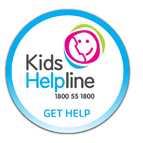Internet Safety:
CyberbullyingCyberbullying is the use of technology to bully a person or group with the intent to hurt them socially, psychologically or even physically.
Cyberbullying behaviour may include:
- abusive texts and emails
- hurtful messages, images or videos
- imitating others online
- excluding others online
- humiliating others online
- nasty online gossip and chat.
By reporting it, talking about it and supporting each other, we can stop it.
For many children and teenagers, their online life is an important part of their social identity. They can’t just ‘switch it off’. Many young people do not report cyberbullying to their parents as they fear that they might lose access to their devices and the internet.
Young people may also be concerned that parents’ actions will make cyberbullying issues worse, so it is important for you to
remain calm and supportive.

Trolling
Trolling is when a user intentionally causes distress by posting inflammatory comments online.
- Trolling differs from cyberbullying in that trolls aim to gain attention and power through disruption of conversation by encouraging a defensive reaction from those they attack. Cyberbullying usually focuses less on the reaction of the victim, and more on the feelings and authority of the bully. Cyberbullying is usually repeated behaviour, while trolling can be one-off.
What can I do?
As a parent, you can help your child and encourage them to take control of the issue.
Talk to them about cyberbullying before it happens. Together you should work out
strategies to address any potential issues and reassure your child that you will be there
to support them.
- Report the cyberbullying material to the social media service where it happened.
Social media services should remove cyberbullying material that has been reported and is in breach of their terms and conditions. Most social media services have a reporting area on their website. The Office website also provides information about how to report material on various services. - Collect details of the cyberbullying material. You might need to do this before you report it to the site. A simple way to collect this information is by taking a photo or screenshot or copying the URL.
If you submit a complaint to the Office about cyberbullying material, you need to provide
this information.
- Report cyberbullying to the Office of the Children’s eSafety Commissioner.
- Block the person. We recommend that you help your child block or unfriend the person upsetting them, so they cannot continue to upset them whilethe material is being removed.
- Remember that if your child has been involved in cyberbullying, and seems distressed or shows changes in behaviour or mood, it may be advisable to seek professional support through





